Over 25 years I founded, launched and published nine magazines in consumer electronics, all internationally distributed and ranging from 75,000 readers per issue up to over 1 million readers.

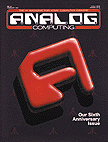
A.N.A.L.O.G. Computing • I co-launched A.N.A.L.O.G. Computing in February 1980 with Michael DesChenes. ANALOG was the first magazine dedicated to the Atari 8-bit personal computer, which was a top selling computer in the U.S. during the early ’80s. Soon after the first issue rolled out, ANALOG quickly became one of the largest personal computer magazines in the 80’s. Every issue contained terrific editorial and several type-in software features, many of which rivaled commercial software. Our crew was probably the best in-house computer magazine staff in computer magazine history. It included Tom Hudson (who went on to author Studio 3D for Autodesk), Brian Moriarty (author of Infocom’s Trinity and LucasGames Loom) and Jon Bell (who worked on The Abyss, Terminator films, and several series for the Discovery Channel).
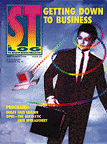
ST-Log • ST-Log was launched to keep up with Atari ST 16-bitcomputer and the rapid release of software to support it. ST-Log started out as an insert in ANALOG, then spun off into a separate publication. The ST computer found a home in the MIDI (music) segment with musicians. Some of the many included Fatboy Slim, Fleetwood Mac, Jean Michel Jarre, Madonna, Mike Oldfield, Phillip Glass and Tangerine Dream. The ST was also instrumental in the early days of computer graphics and the primordial days of desktop publishing. Both ANALOG and ST-Log were sold in 1988.
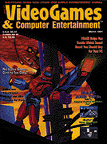
VideoGames & Computer Entertainment • VideoGames & Computer Entertainment was the top selling video game magazine of it’s day. When I launched it, VG&CE covered the 8-bit game consoles such as the Nintendo and Sega, then later the TuboGrafx, Genesis, and Super NES. Computer-platform and arcade games were also covered. VG&CE was also the first games magazine in the U.S. to include detailed strategy guides on popular games. Our front covers were the best at the time frequently featuring the work of Alan Hunter. VG&CE was eventually split-up into several separate video and computer gaming magazines.
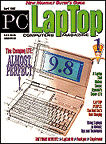
PC LapTop • For 6 months I commuted from Boston to Los Angeles nearly every week. During my travels I noticed more and more laptop computers being used on planes PC LapTop Computers Magazine was born! This was more than a year prior to portable computers becoming really popular, so we were really in on the ground floor. (386 machines were a dream at the time we released the first issue in February of 1989.) The second year of publishing saw laptop computers outselling desktop machines, and the magazine was accepted as the leader in its category. Every issue reviewed the latest machines, offered tips on the use of various software, and contained a detailed buyer’s guide of every portable computer on the market.
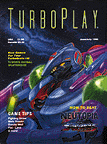
TurboPlay • When I got my hands on a Japanese “PC Engine” video game system, I knew it had the best graphics of any system at the time. I released Turboplay to cater to the U.S. version of the PC Engine, the NEC TurboGrafx-16. NEC included our subscription flyer for Turboplay with every TurboGrafx game system. At first, most of the editorial came from the Japanese PC Engine Fan magazine, published by Shogakukan. The Turboplay staff translated the text to English and augmented the graphics with Alan Hunters wonderful illustrations. Having played video games since the early ’70s, I had gotten bored with “shoot ‘em up’s” – The TurboGrafx offered one of my favorite all time games, Military Madness (Nectaris in Japan). Two follow up games to Nectaris were NeoNectaris and (on the SNES) Earthlight.
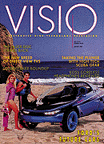
VISIO • VISIO was my favorite magazine launch. Covering the spectrum of consumer electronics, gadgets, cool automobiles, and other hi-tech lifestyle products, the magazine was always different and on the cutting edge. The layout and graphics were clean and trend setting – Newsweek and Business Week were just some of the publications to mimic our look. VISIO also utilized some of the top writers in their fields: C. Van Tune (eventually the Editor-in-Chief of Motor Trend), Jim Martin (Kit Plane Magazine), Kevin Space (Hot Boat), and Thom Harrop (Camera & Darkroom). Our photography was frequently used by manufacturers for use in their advertising and PR (Casio, Technics, and many others.). VISIO explored creative content that existing CE magazines lack (except for Wired). The title was a mix of “vision” and “audio”; Microsoft must have liked our name because they used it 10 years later, along with the Vizio line of TV’s and more recently a new magazine in South Africa.
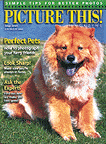
Picture This! • Picture This! became the how-to photography magazine for everyone. The VP of Marketing at Olympus asked us how we were going to teach photography when they couldn’t even get their customers to read the owner’s manuals. Our easy-to-use before-and-after style taught photo techniques through pictures, minimizing text. Careful research provided us with the most frequently photographed subjects, making the magazine useful and timely… and fun! Some of our issues have covered vacation photography, pets, portraits, children, and fun photos for kids. Regular contests let readers submit their pictures for a chance to win cameras, film, and other goodies. The magazine received praise from Nikon, Fuji, Agfa, Olympus, Minolta, and other top manufacturers.
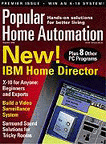
Popular Home Automation • I also launched a title for the electronics do-it-yourselfer, Popular Home Automation, which was produced under Electronic House Publishing. Covering home theater, home automation, and other practical electronics projects around the house. Step-by-step instructions and useful examples guided readers through every stage of a project. Other articles covered lighting, HVAC, security, entertainment and the use of a computer to run your home. The magazine was really in the early days of home automation when it was more of a gimmick then practical and reliable. Add that to the fact that the owner of EH was one of these guys who treated the editorial simply as a means to fill the pages between the ads.
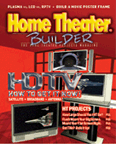
Home Theater Builder • My most recent publication, Home Theater Builder, used very detailed CGI, created in-house, to make media room construction and technology easier to understand. HTB covered everything from how to pick the perfect video projector to installing seating to a riser platform the reader could build on their own. Some of our fun articles have included building a candy counter, color coordinating, designing home theaters in odd-shaped rooms and covering media rooms our readers have built. Many of our achievements included bringing some of the top (and very competitive) cable & wire manufacturers together for an extremely informative cover story on that subject, running another cover story on how to get HDTV “now”, getting the “perfect picture”, and looking at some of the best HT accessories on the market.
The dedication and long hours of so many people made these publications high quality and successful.